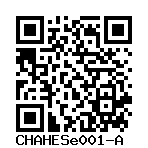CHA-hES NT6, CHA-NTK6
CHAHESe001-A
General
Cell Line |
|
| hPSCreg name | CHAHESe001-A |
| Cite as: | CHAHESe001-A (RRID:CVCL_B5RM) |
| Alternative name(s) |
CHA-hES NT6, CHA-NTK6
|
| Cell line type | Human embryonic stem cell (hESC) |
| Similar lines |
|
| Last update | 19th November 2021 |
| User feedback | |
Provider |
|
| Generator | CHA University (CHAHES) |
External Databases |
|
| BioSamples | SAMEA11039557 |
| Cellosaurus | CVCL_B5RM |
| Wikidata | Q111733112 |
General Information |
|
| Publications |
|
| * Is the cell line readily obtainable for third parties? |
No |
| Subclones | |
Donor Information
General Donor Information |
|
| Sex | female |
Phenotype and Disease related information (Donor) |
|
| Diseases | A disease was diagnosed.
|
External Databases (Donor) |
|
| BioSamples | SAMEA11039299 |
Ethics
| Was the embryo established purely for research purposes? | Yes |
| Have both parents consented to the use of the embryo for ESC derivation? | Yes |
| Has informed consent been obtained from the donor of the embryo/tissue from which the pluripotent stem cells have been derived? | Yes |
| Was the consent voluntarily given? | Yes |
| Has the donor been informed that participation will not directly influence their personal treatment? | Yes |
| Can you provide us with a copy of the Donor Information Sheet provided to the donor? | Yes |
| Do you (Depositor/Provider) hold the original Donor Consent Form? | Yes |
| Please indicate whether the data associated with the donated material has been pseudonymised or anonymised. | pseudonymised |
| Does consent explicitly allow the derivation of pluripotent stem cells? | Yes |
| Does consent prevent CELLS DERIVED FROM THE DONATED BIOSAMPLE from being made available to researchers anywhere in the world? | Yes |
| How may genetic information associated with the cell line be accessed? | Controlled Access |
| Will the donor expect to receive financial benefit, beyond reasonable expenses, in return for donating the biosample? | No |
| Has a favourable opinion been obtained from a research ethics committee, or other ethics review panel, in relation to the Research Protocol including the consent provisions? | Yes |
| Name of accrediting authority involved? | Pearl IRB |
| Approval number | 14-SUNG-101 |
hESC Derivation
| Date of derivation | 2015-02-02 |
| Embryo stage | Blastula with ICM and Trophoblast |
| Supernumerary embryos from IVF treatment? |
No
Other hESC source:
Somatic Cell Nuclear Transfer (SCNT)
|
| PGD Embryo? |
No |
Culture Conditions
| Feeder cells |
CF1 strain mouse embryonic fibroblasts |
||||||||||||
| Passage method | Mechanically | ||||||||||||
| Medium |
Other medium:
Base medium: DMEM/F12
Main protein source: Knock-out serum replacement Serum concentration: 20 % Supplements
|
||||||||||||
| Has Rock inhibitor (Y27632) been used at passage previously with this cell line? | No |
||||||||||||
| Has Rock inhibitor (Y27632) been used at cryo previously with this cell line? | No |
||||||||||||
| Has Rock inhibitor (Y27632) been used at thaw previously with this cell line? | No |
Characterisation
Analysis of Undifferentiated Cells
| Marker | Expressed | Immunostaining | RT-PCR | Flow Cytometry | Enzymatic Assay | Expression Profiles |
| POU5F1 (OCT-4) |
Yes |
|
||||
| NANOG |
Yes |
|
||||
| TRA 1-60 |
Yes |
|||||
| TRA 1-81 |
Yes |
|
||||
| Alkaline Phosphatase |
Yes |
|
Morphology pictures
Differentiation Potency
In vivo teratoma
In vitro spontaneous differentiation
Morphology
Genotyping
Karyotyping (Cell Line) |
|
| Has the cell line karyotype been analysed? |
Yes
46,XX,inv(9)
Passage number: p5
Karyotyping method:
G-Banding
|
Other Genotyping (Cell Line) |
|


Login to share your feedback, experiences or results with the research community.